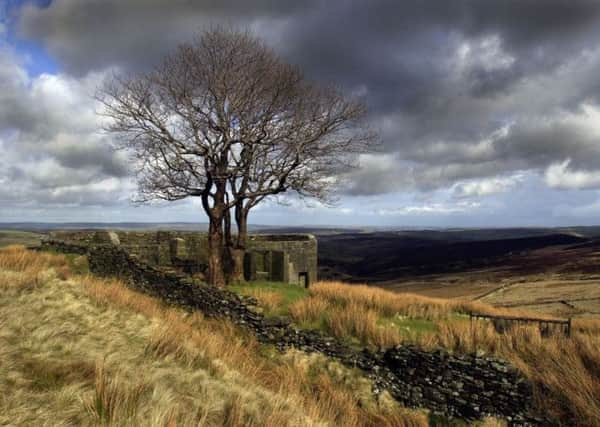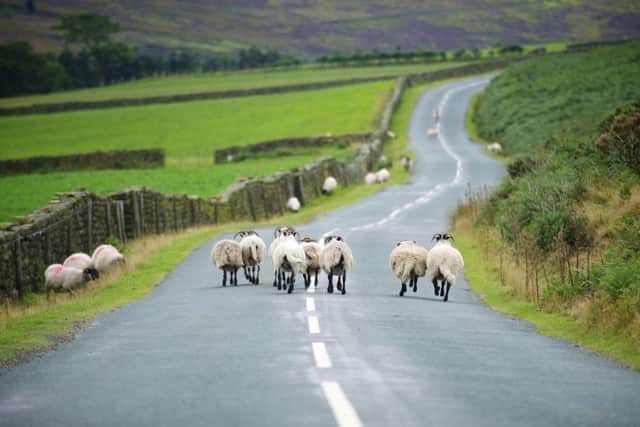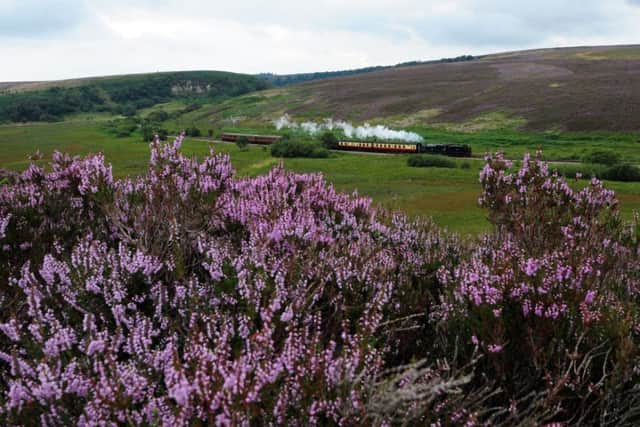The timeless appeal of our landscape’s bleak beauty


WHETHER it’s the windswept hills surrounding Haworth, or the stark lunar beauty of Saddleworth, our moors have a magnetic appeal.
For centuries Britain’s moorland has beguiled and enchanted those who have ventured into its vast expanses and it still does today. For some it offers a pleasant family day out in the country and a chance to escape the stresses of urban life, while others imbue it with a powerful spirituality.
Advertisement
Hide AdAdvertisement
Hide AdFor writers and artists, too, it has provided a deep well of inspiration. Ashley Jackson has carved out a successful career capturing the spirit of Yorkshire’s moors in his brooding watercolour paintings, while for Ted Hughes the foreboding beauty of the Calder Valley was a lifelong inspiration. Then there are classic novels like Emily Brontë’s Wuthering Heights and The Hound of the Baskervilles by Arthur Conan Doyle.


Thousands of books have been written about the moors and William Atkins is the latest scribe to attempt to capture their spirit in print. The Moor – Lives Landscape Literature is part travelogue and part biography in which the author takes us on a journey through Britain’s moorland scenery revealing a world that is both strange and familiar.
We perhaps all have our own ideas of what the moors are and Atkins has his. “There is no question when the moor proper has been reached,” he writes. “You know it like a cold breath on the nape – the ground becomes tussocked and sopping. The place is at once underfoot and on the horizon.”
Atkins, a writer and editor, was brought up in rural Hampshire which nurtured his fascination with the great outdoors and four years ago he set out on a journey to explore our captivating moorlands. “I wanted to find out what the moors of England that I’d read about in books like Lorna Doone and Wuthering Heights were actually like in reality,” he says.
Advertisement
Hide AdAdvertisement
Hide Ad“I started off in the South West from Dartmoor and Exmoor and travelled up to the Peak District and Yorkshire and on to Northumberland.”


The ensuing book is full of the voices of the moors both past and present, from murderers, monks and priests through to poets, ramblers and environmentalists. During his travels he spent several weeks in Yorkshire in places like Haworth, the Calder Valley and the North York Moors.
“I see Yorkshire as the heartland of this book and Ted Hughes as its presiding spirit,” he says.
There have, of course, been reams written about the country’s moors over the years and Atkins deliberately hasn’t tried to write a definitive study. “I was very conscious from the outset in writing about such a big geographical space that I was barely scratching the surface.
Advertisement
Hide AdAdvertisement
Hide Ad“I was also very much aware that there are people who know their local patch far better than I could ever dream of. Instead what I’ve tried to do is look at why the moors are so special and what a place like Dartmoor has in common with Spaunton Moor.
“I wanted to spend time in these places talking to people and finding out about local stories which is why I returned to them several times, because I didn’t want this to be like a tourist book with me just passing through.”
He says his journey changed his perceptions about our moorlands. “We tend to think of them as these isolated and unpopulated places but they’re actually rich with human stories and I wanted to find out about these stories and speak to the people who live and work on the moors now.”
He found himself becoming fascinated by people like Frank Elgee, an ecologist and naturalist who wrote several books about the North York Moors back in the 1930s. “He had a lifelong passion for the moors and he wrote beautifully about it and he’s become a bit of a hero of mine.”
Advertisement
Hide AdAdvertisement
Hide AdAtkins found his experience travelling around the nation’s moorland a journey of discovery. “I came to know England better than I ever had done before, it was a bit of revelation. I found that our moorlands are actually incredibly diverse, not only in each county but each town and village because they all have their own stories.”
One of his favourite walks was heading eastwards from Danby towards Fylingdales in North Yorkshire. “One of my ambitions was to find the centre of the moors that Emily Brontë wrote about and I found it there, right on the top surrounded by dense heather and the thick sound of grouse and curlew.”
He admits it was a strange experience. “It can be a very alien place but at the same time I could see the truncated pyramid of the radar base. It was always there in the distance and you realise that despite feeling like you’re miles from anywhere, man’s presence is never too far away.”
We are attracted by this idea of being in the wilderness but as Atkins points out even the moors themselves are a product of man’s attempts to tame nature. “A tension exists between what draws people to the moors and what the reality is,” he says. “The fact that the moors are treeless is a man-made phenomenon and when you walk across the North York Moors you can see the remnants of old mines and grouse butts.”
Advertisement
Hide AdAdvertisement
Hide AdHowever, while the moors can be bleak at times, as anyone who’s been caught in a snowstorm or sudden downpour will testify, they also possess an intrinsic beauty.
“I spent many wonderful days in Yorkshire. My view before I set off on this journey was, like many people’s, that this landscape is bleak and desolate, but very often I found it extremely beautiful.”
It’s perhaps easy to think of moorland all being the same but Atkins says there are often significant differences between somewhere like Bodmin Moor in Cornwall and Goathland Moor in North Yorkshire. “The plant life of the northern moors is completely different. It’s dominated by heather and bracken whereas in the south west it’s predominantly grassland and it feels a bit like the Russian steppes, you have this huge sense of space and flatness.”
Atkins believes that many of our ideas about the moors have been shaped by literature. “When people think of Dartmoor they quite often think about The Hound of the Baskervilles, while writers like Emily Brontë and William Wordsworth are big influences obviously.
Advertisement
Hide AdAdvertisement
Hide Ad“It’s often suggested that for Emily Brontë the moors represented freedom and liberty but I actually think they were more important to her than that, I think they were central to her imagination.”
But why do the moors have such an emotional pull? “People are drawn there for different reasons and I think one of the main reasons is the idea of being somewhere remote and seemingly inhuman. The moors aren’t necessarily particularly physically challenging, they aren’t like mountains, but they can be challenging in different ways. It can be quite daunting when you’re actually out there because there’s a lack of habitation and trees, but we seem to be attracted by this solitude and seek it out. But what are we hoping to find? I’m still trying to find an answer to that.”
Maybe we’re attracted by the fact that the moors remain unchanged, an age-old landscape standing defiantly against the passage of time? Perhaps, too, they are kind of umbilical cord between us and the natural world, a reminder that for all our concrete kingdoms we’re just a stone’s throw from our ancient, muddy beginnings.
• The Moor –Lives, Landscape Literature, published by Faber & Faber, is out on May 15 priced £18.99.